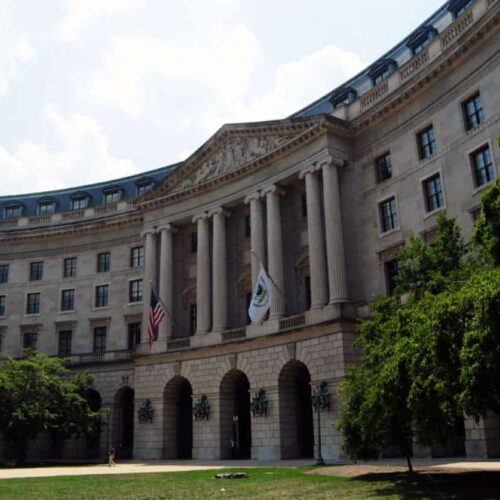Introduction
Two presidential administrations have tried to lower the carbon footprint left by hundreds of thousands of computers used by the federal government. Presidents George W. Bush and Barack Obama both issued executive orders requiring agencies to adopt “green IT” practices – such as reducing the number of printouts and curbing energy consumption by relying on central servers rather than desktops.
Yet nobody, not even officials at the Environmental Protection Agency, which has a mission of safeguarding the environment, can tell exactly how well the government is doing – the result of a failure to set up reliable ways of measuring the impact of the initiatives, the Government Accountability Office has found.
The GAO, the investigatory arm of Congress, concluded from a sampling of six agencies that the government has adopted “sustainable and more environmentally friendly“ practices – but has little way to gauge progress.
“Even with the potential of green IT, the effectiveness of agencies’ efforts cannot be measured,” the GAO said.
Minimizing government’s impact on the environment can lead to substantial savings. In 2009, one study estimated that federal employees waste more than $440 million each year on unnecessary printing, the GAO noted.
The Environmental Protection Agency, one of the agencies reviewed by the GAO, has promoted ‘green IT’ efforts in both the public and private sector, and highlights the issue on its official Website. But the EPA and the five other agencies – the departments of Commerce , Energy, Health and Human Services, Agriculture and the General Services Administration – all lacked sound data on how well they were performing, making it nearly impossible to determine the actual benefits of green IT practices, the GAO said.
Who to blame? The Office of Management and Budget and the Council on Environmental Quality, the GAO concluded. Neither has provided senior officers at the six agencies examined by the GAO with proper guidance on assembling data or developing baselines against which to measure how well they are doing. The executive orders, signed in 2007 and 2009, require it.
OMB agreed with the GAO’s findings. The council disagreed, saying a baseline measure wasn’t necessary to gauge progress.
President Obama’s executive order specifically required government agencies to update their sustainability plans, which should include “agency goals, milestones and quantifiable metrics and… identify opportunities for improvement and evaluate performance to determine benefits.”
The Agriculture Department, for instance, had a goal to reduce the number of its data centers by 5 percent during fiscal 2010. Concluded the GAO: “It is unclear whether or by how much meeting this 5 percent reduction goal was expected to result in energy or dollar savings or other benefits.”
Assertions of environmental benefits and cost savings are common, and agencies are required to establish such goals. Savings are often said to be significant. By one estimate, federal “green IT” efforts saved 500,000 megawatts and more than $48 million in fiscal 2009.
But can anyone be sure? The GAO noted it did not validate the data.
The GAO did acknowledge signs of progress. For instance, of some 750,000 computers and monitors the federal government disposes of each year, it now reuses 50 percent and recycles 40 percent, throwing away only 10 percent.
Still, some companies in the private sector may be faring better than Uncle Sam.
Hewlett-Packard, for instance, showcases the benefits of measurable green IT practices – and appears to live up to them. The company said it had reduced the number of printers a corporate customer uses around the world by 47 percent, resulting in big savings. Per-page printing costs have dropped 90 percent. The client saved $3 million over two years in the U.S. alone.
A number of companies report lower carbon footprints and savings. PricewaterhouseCoopers, for instance, has reduced energy use by 18 percent and reduced power consumption by 20 million kilowatt hours, cutting operating costs by $2 million, according to one survey. Efforts by State Street Corp. have resulted in energy savings of $3.5 million, and reductions in CO2 emissions of about 30,000 metric tons.
Read more in Environment
Environment
U.S. advisory group on fracking has abundant ties to energy industry
As first recommendations emerge from Energy panel, scientists seek ouster of the chairman, John Deutch – a former CIA chief and director of Energy companies
Environment
EPA focuses anew on obscure chemicals in consumer products
Regulators signal new scrutiny of common ingredient in printers, batteries, brake fluid and pharmaceuticals


Join the conversation
Show Comments